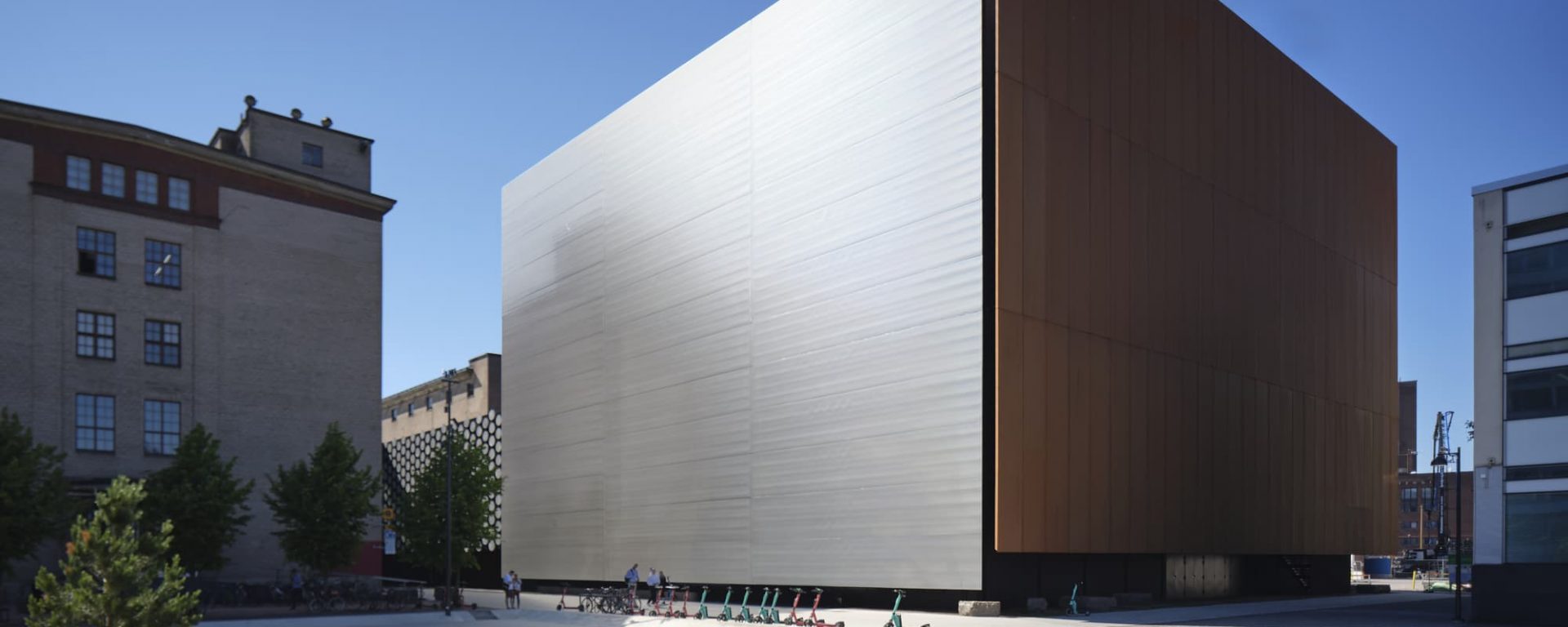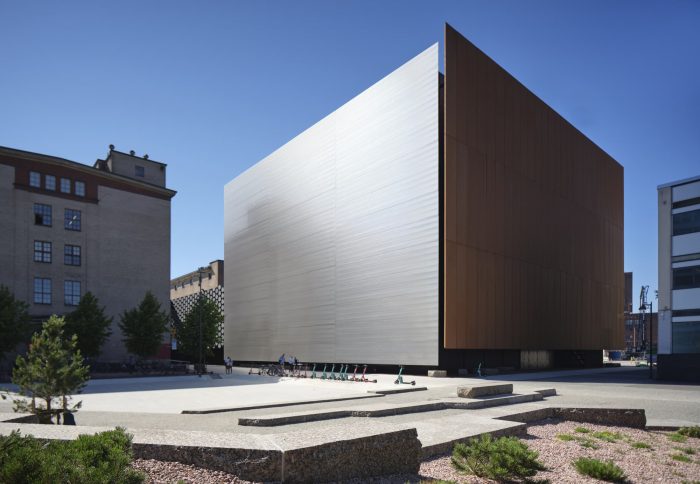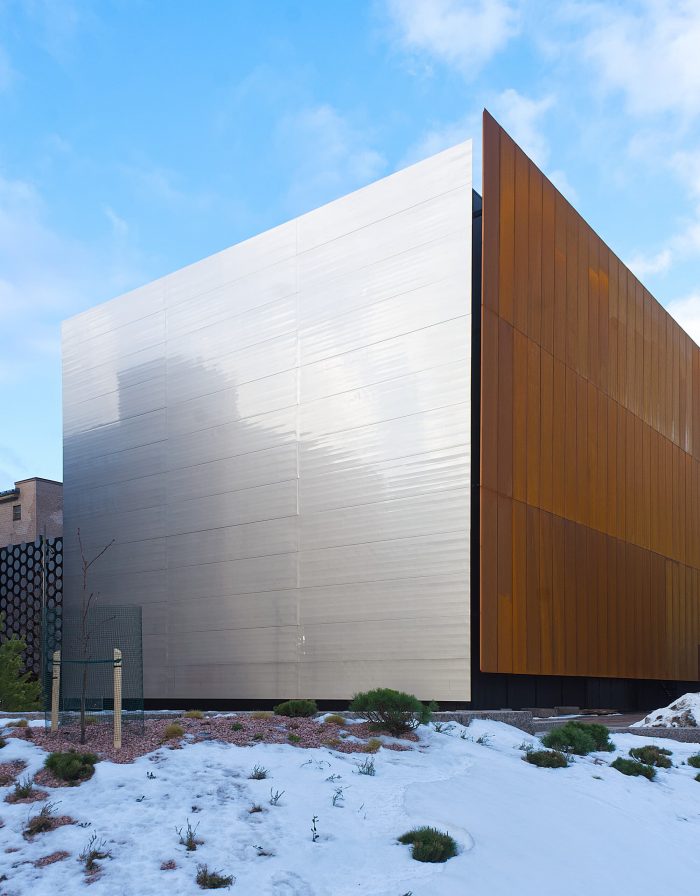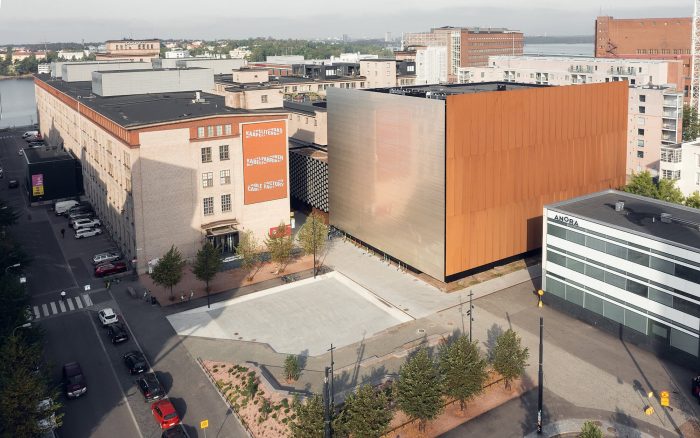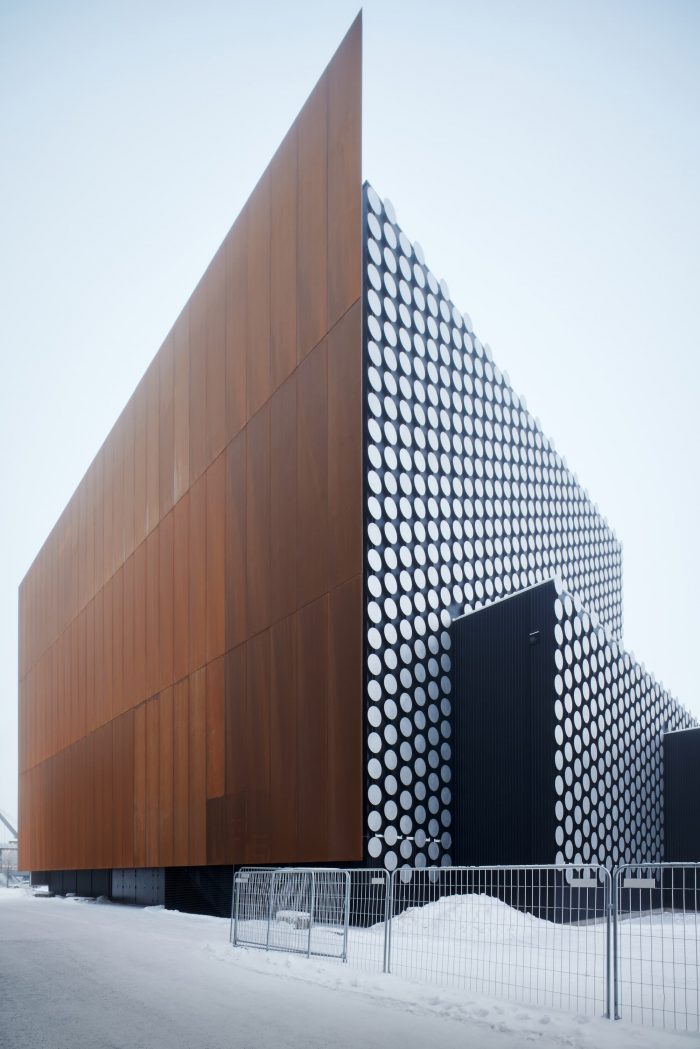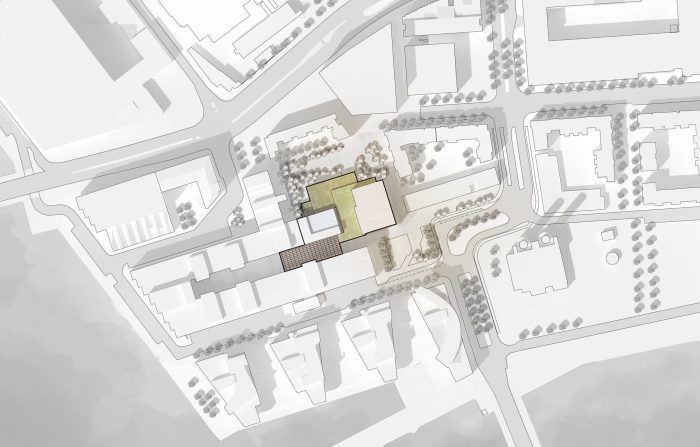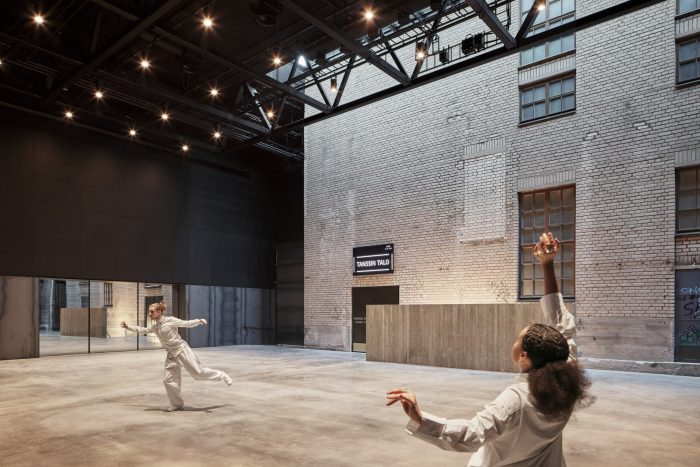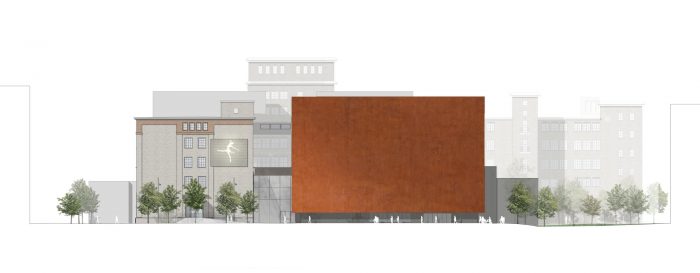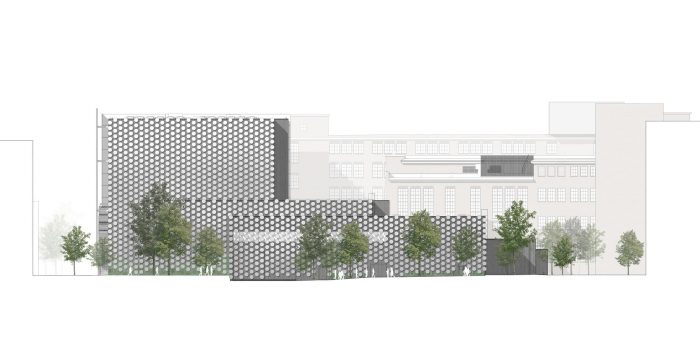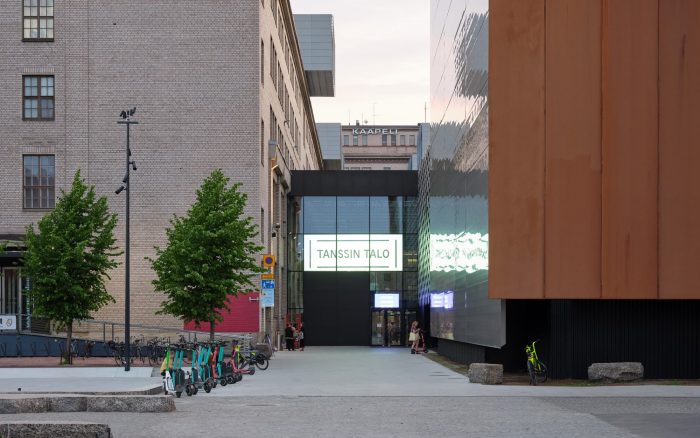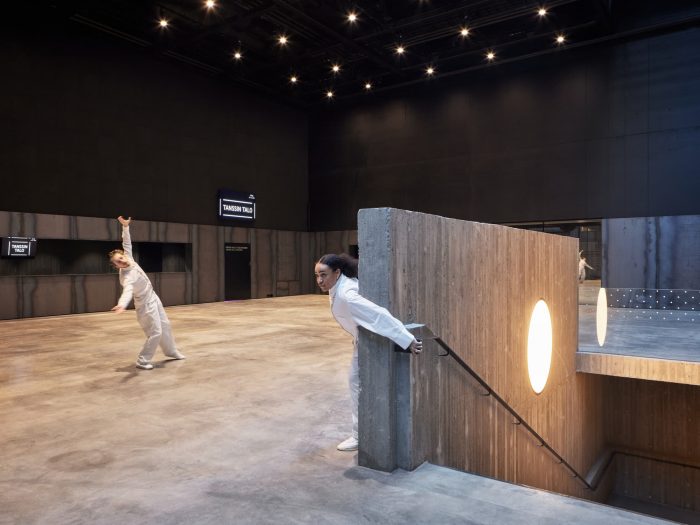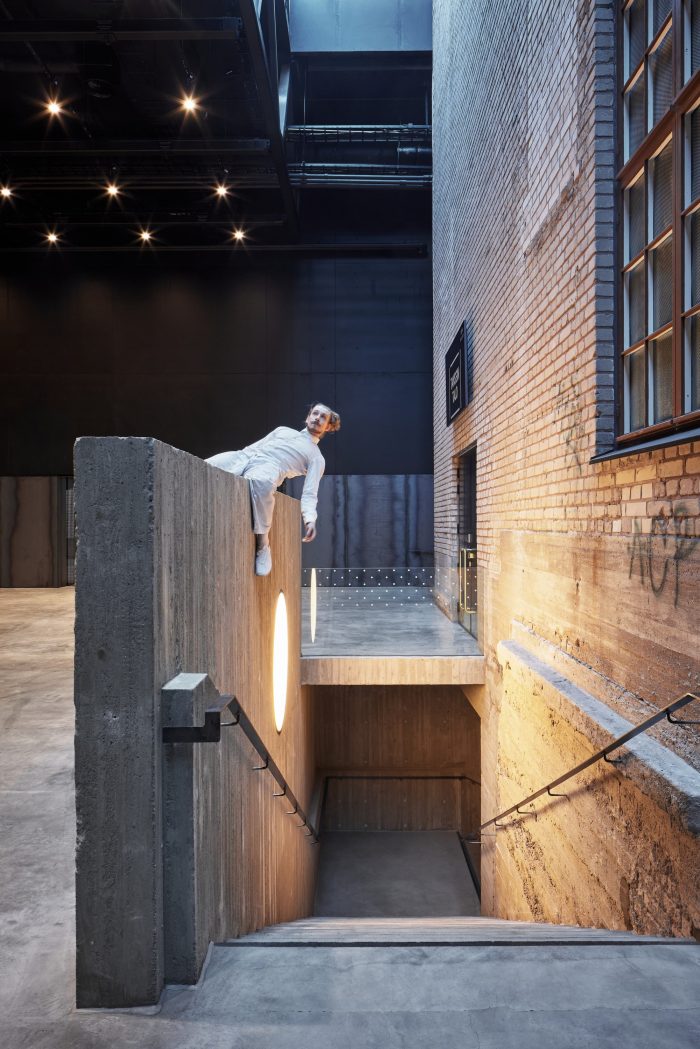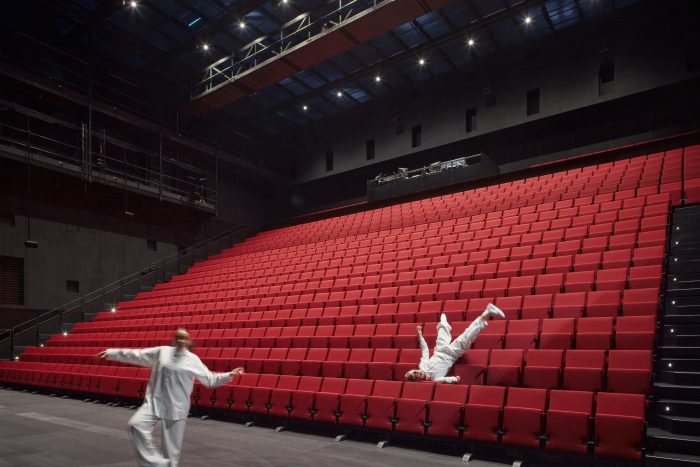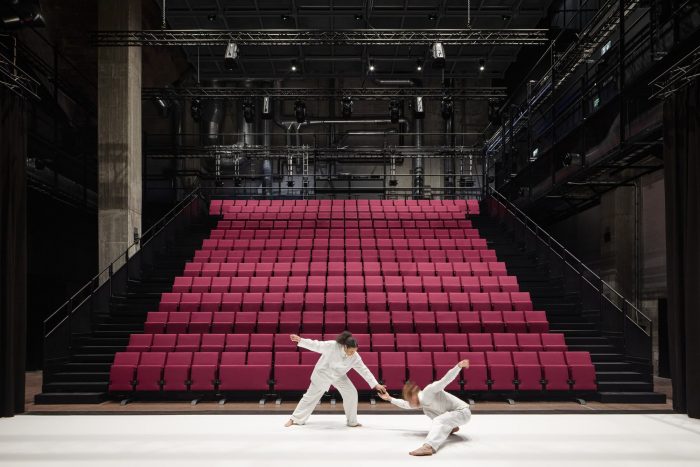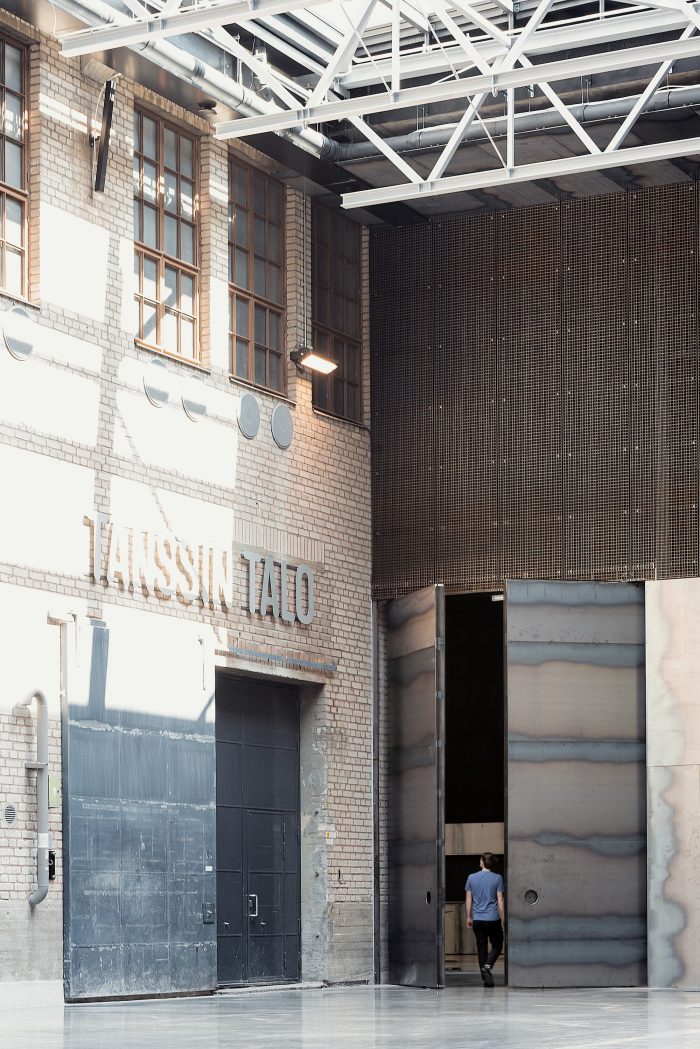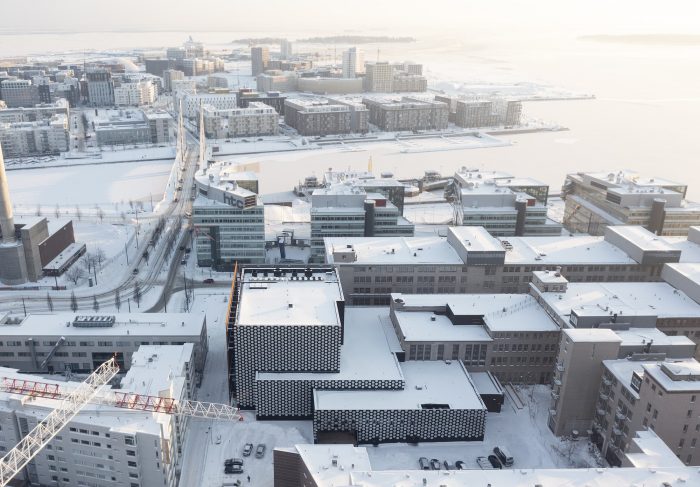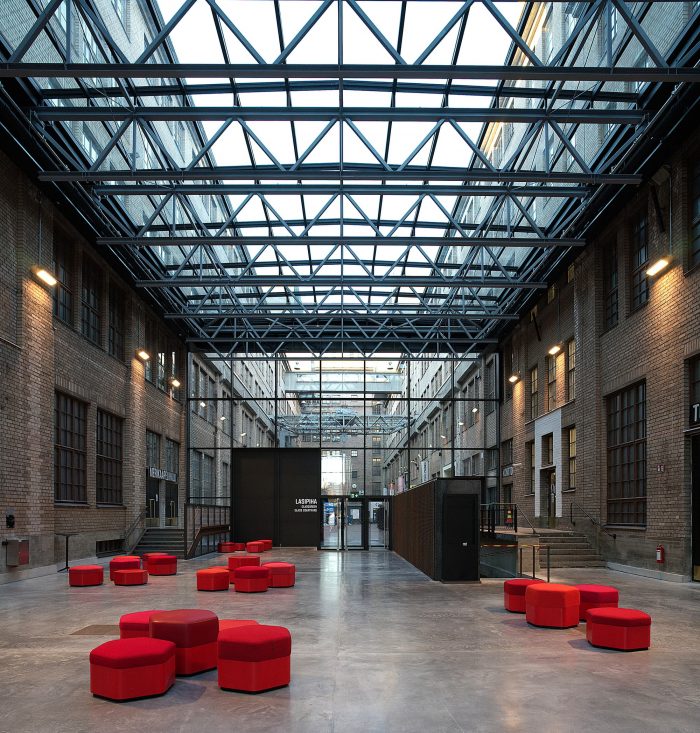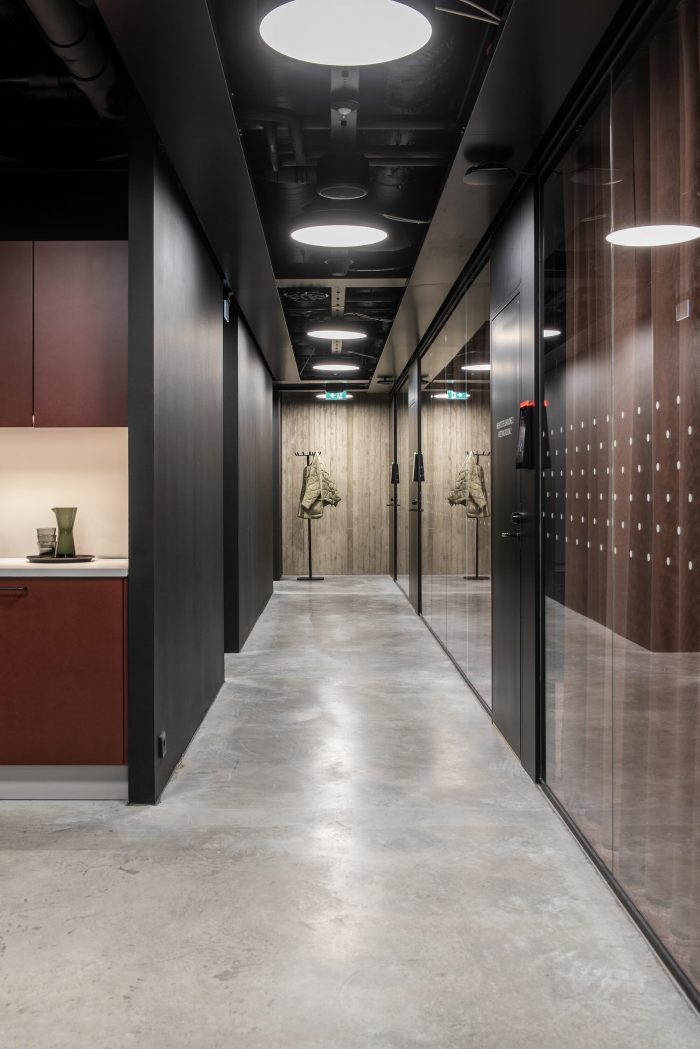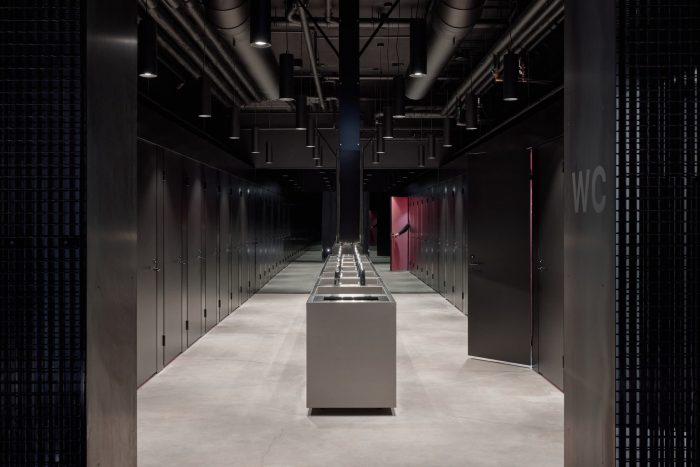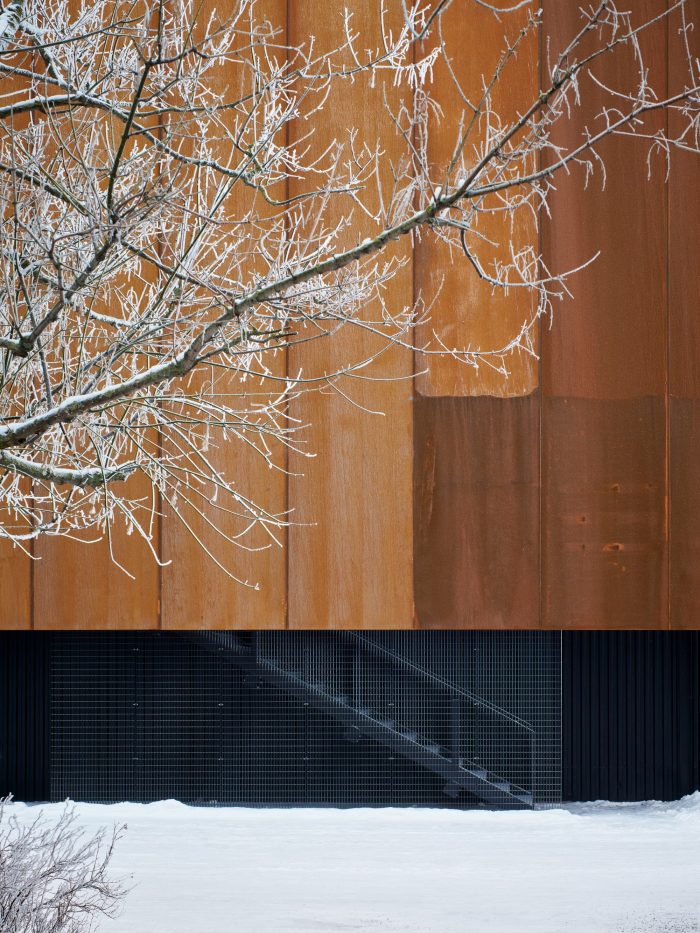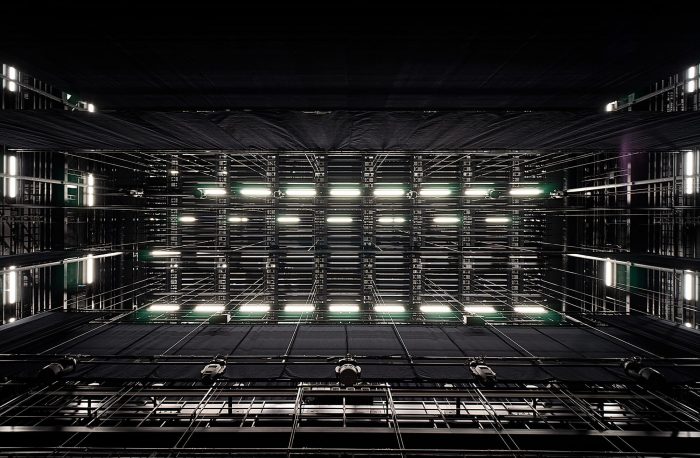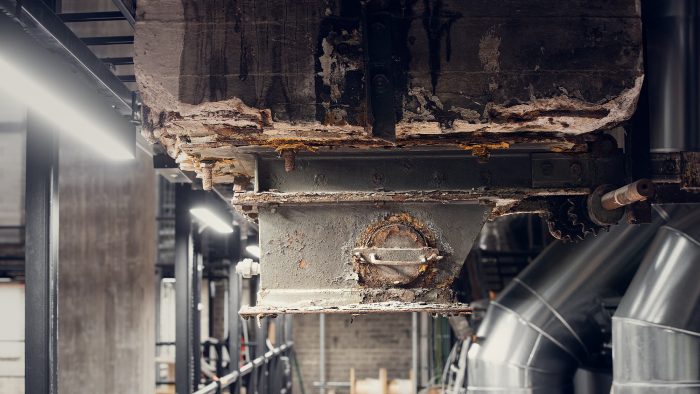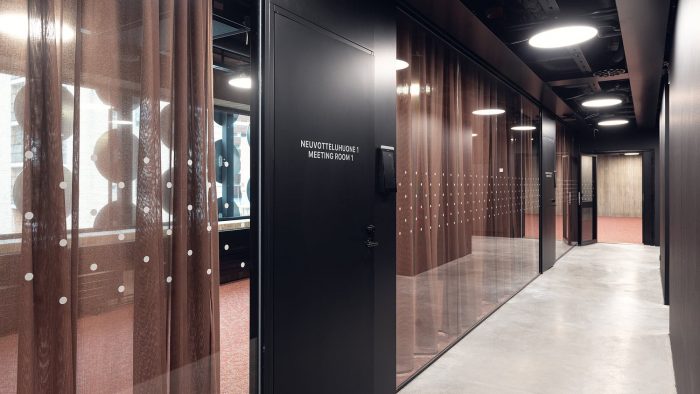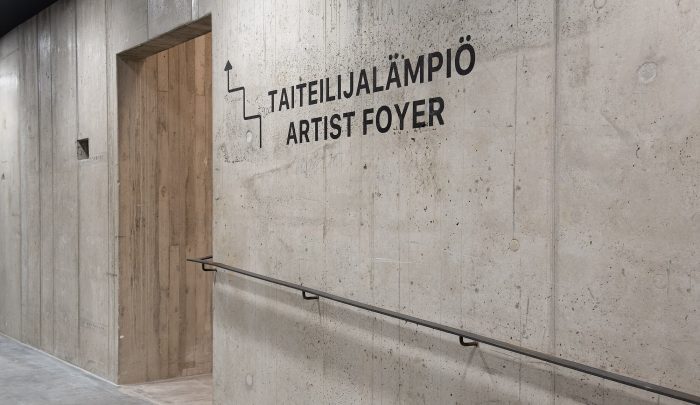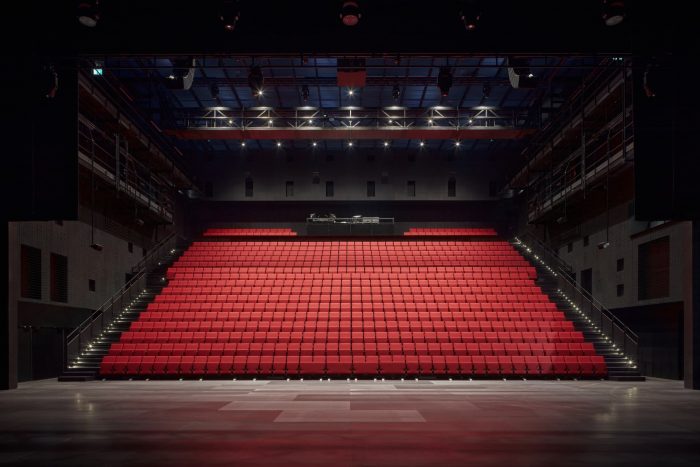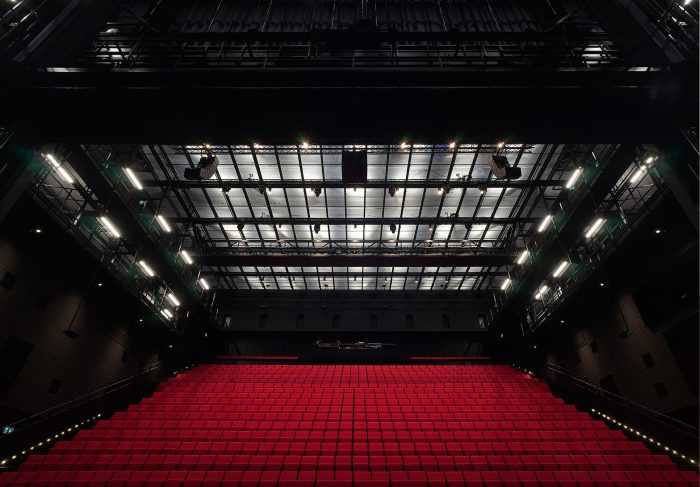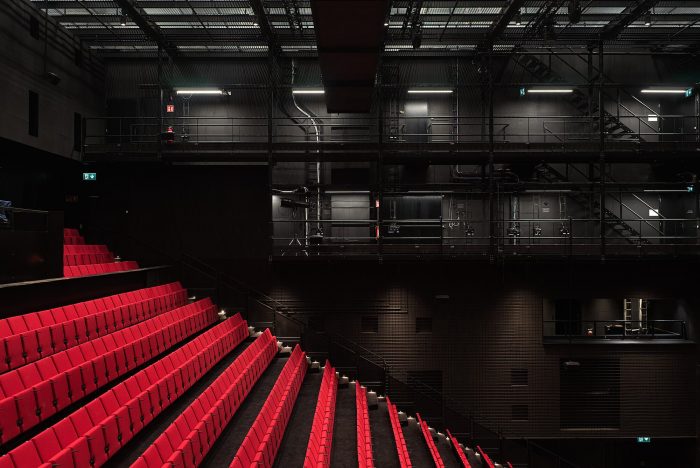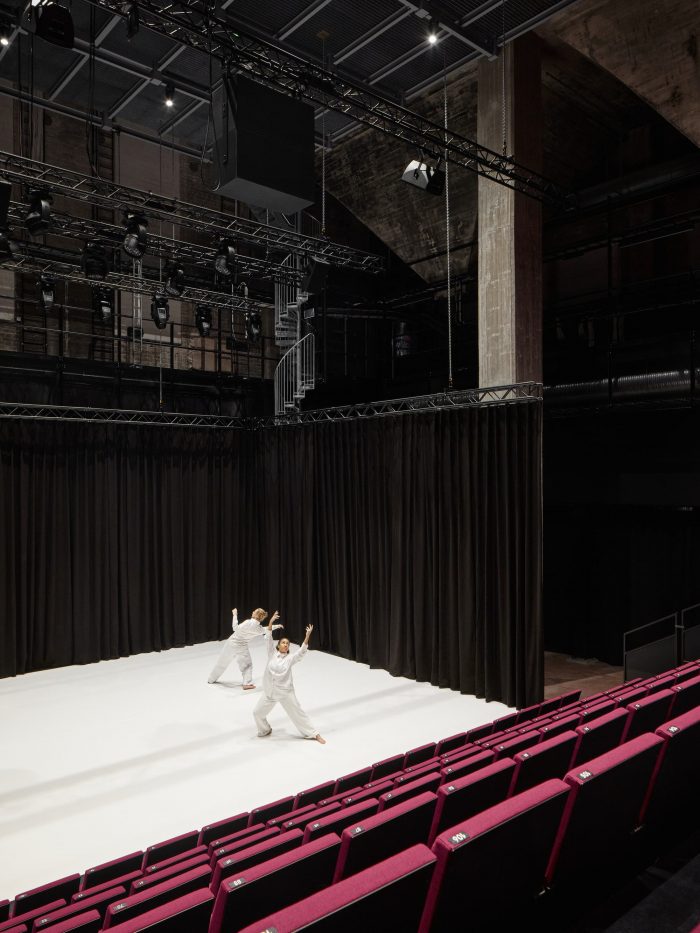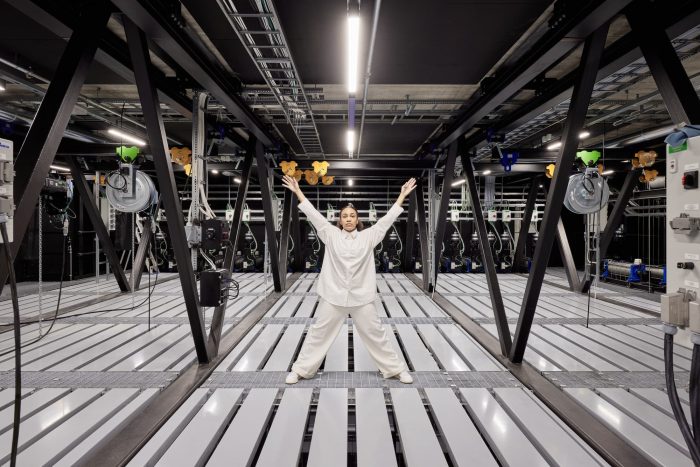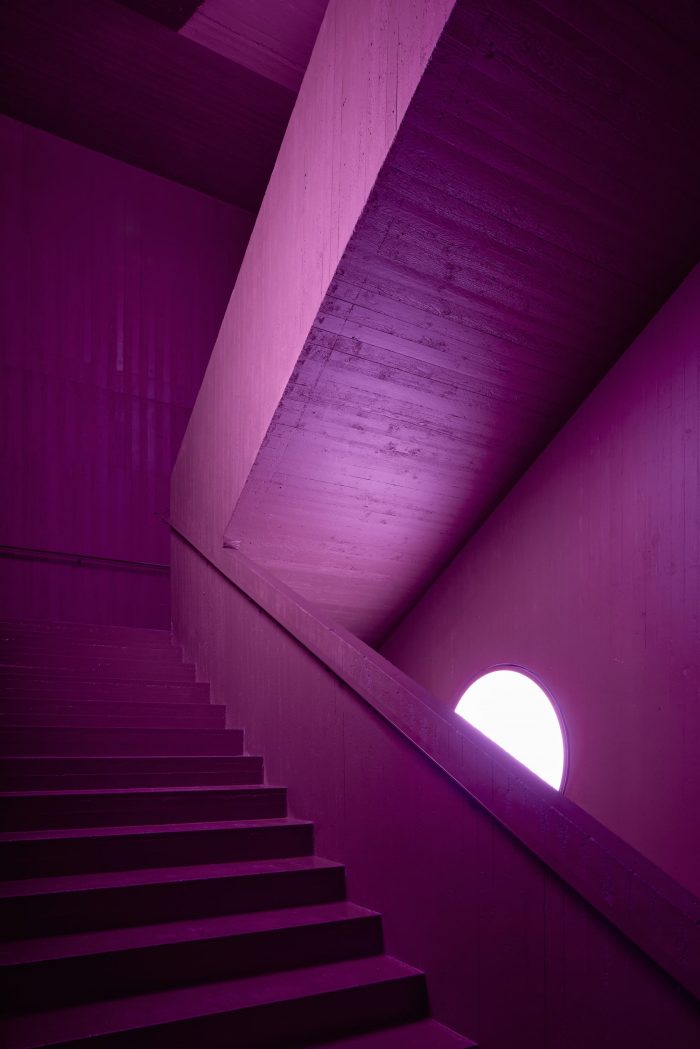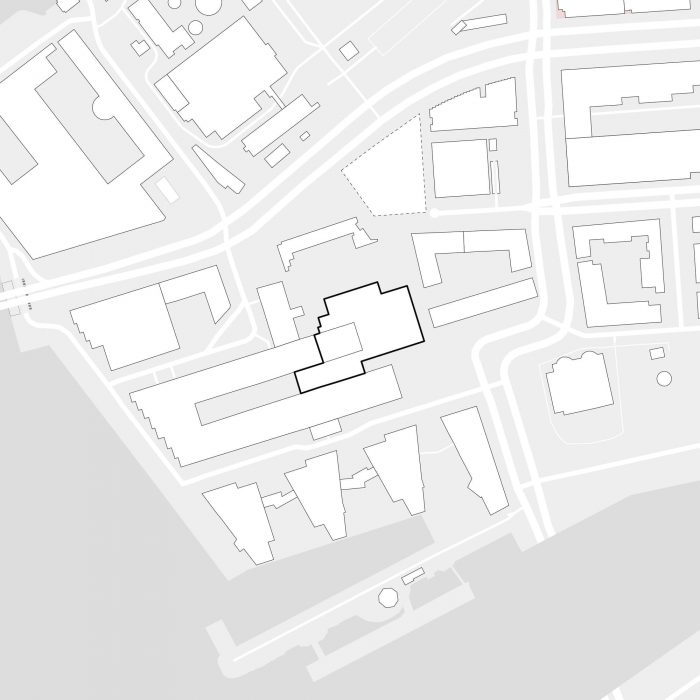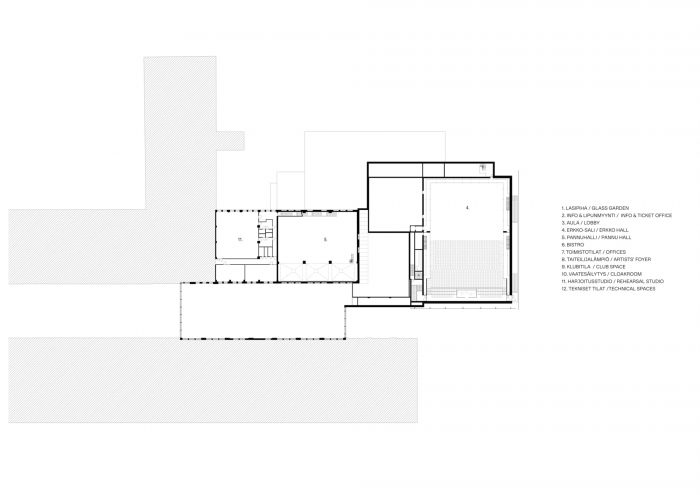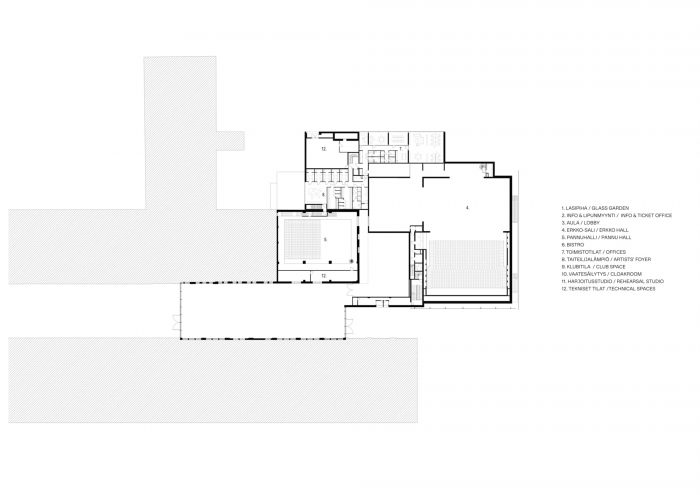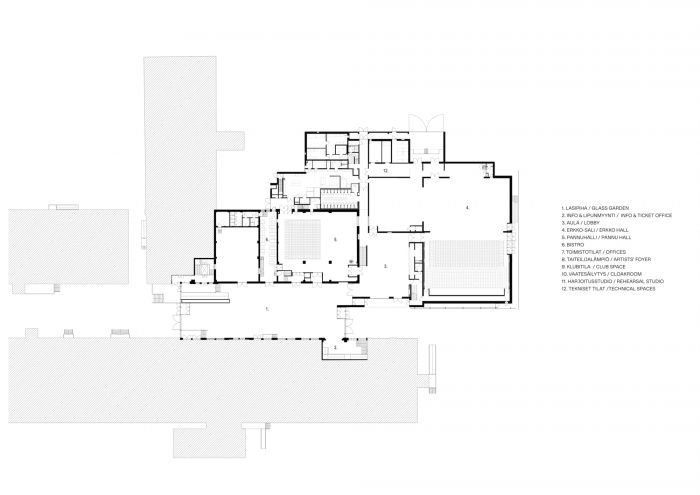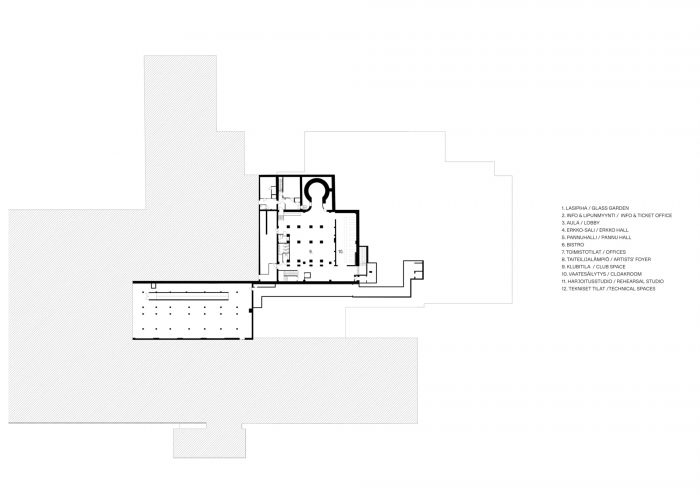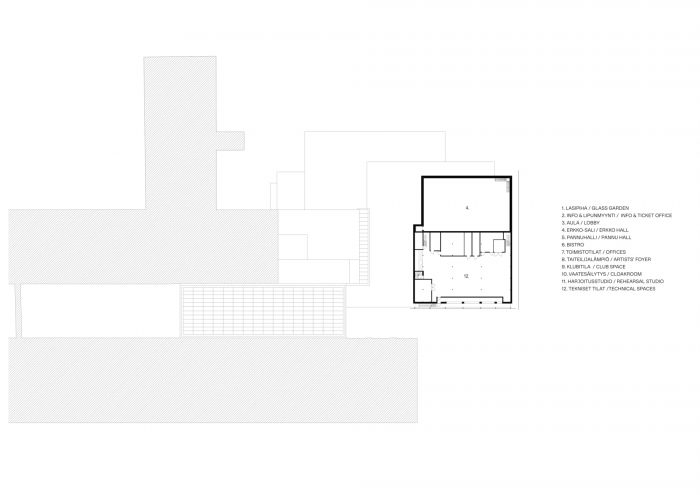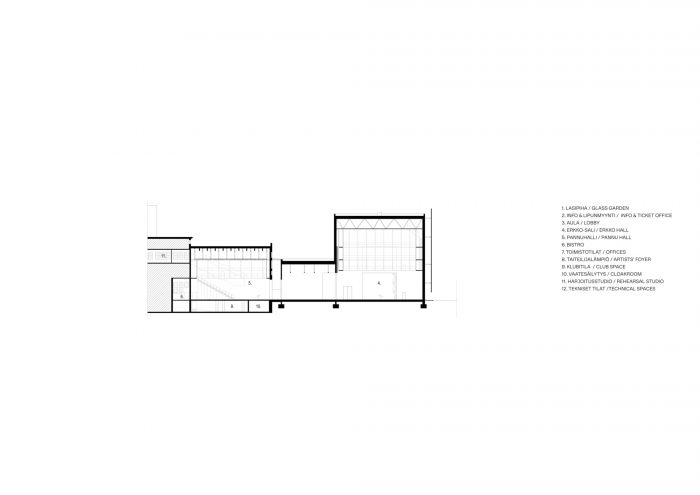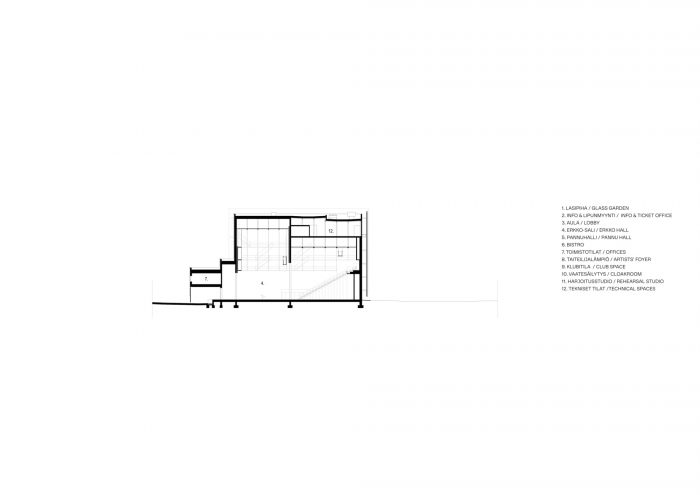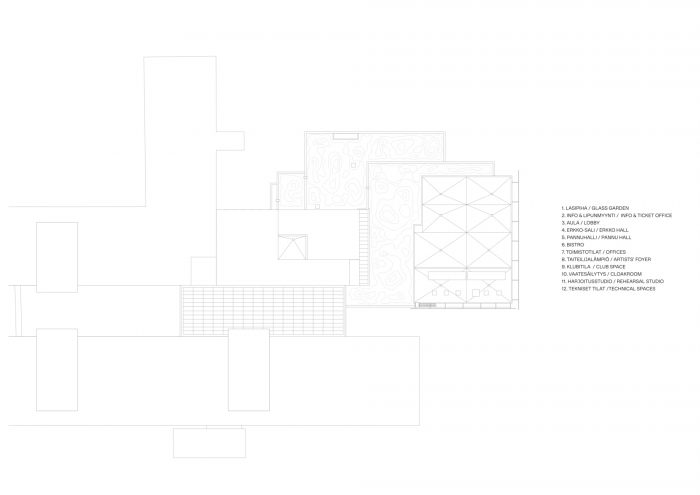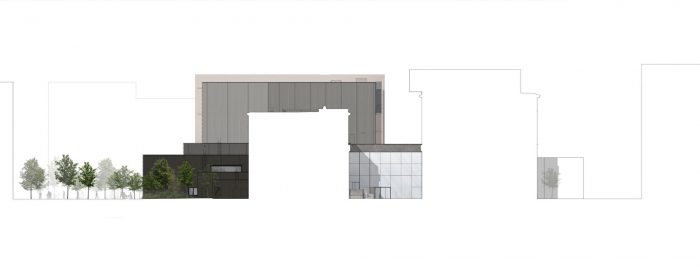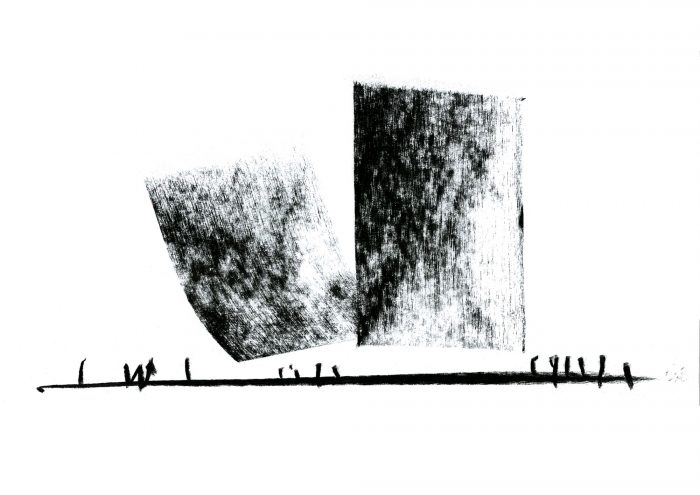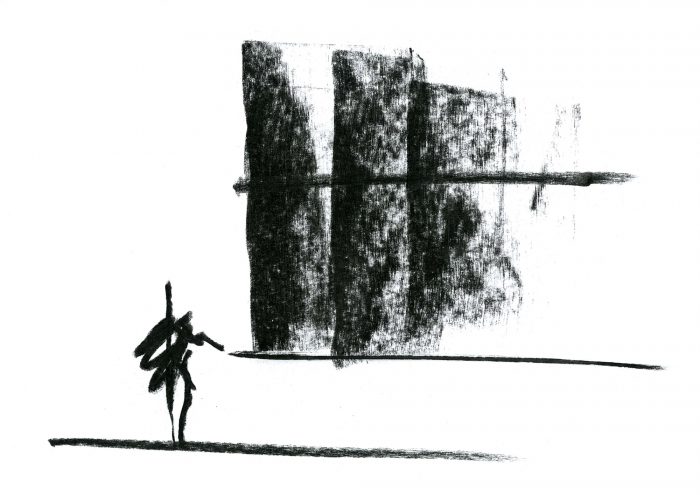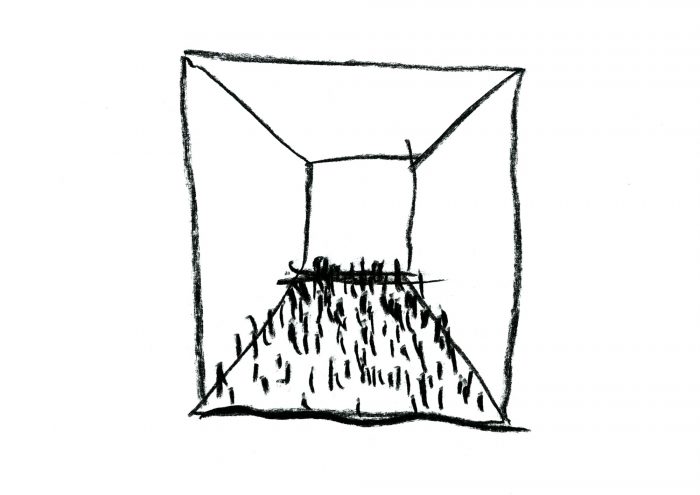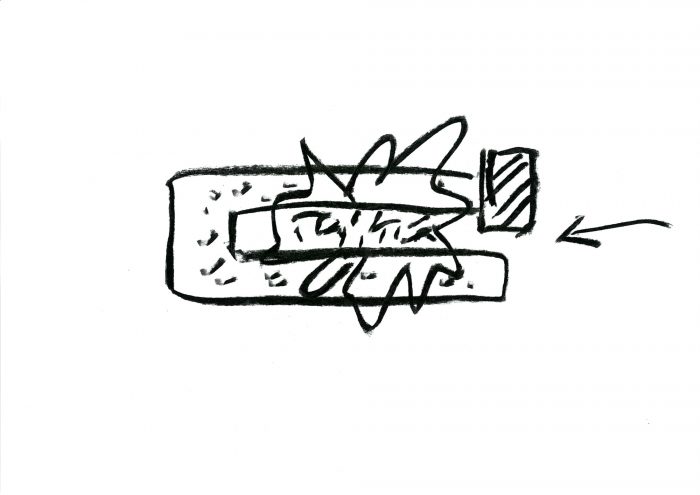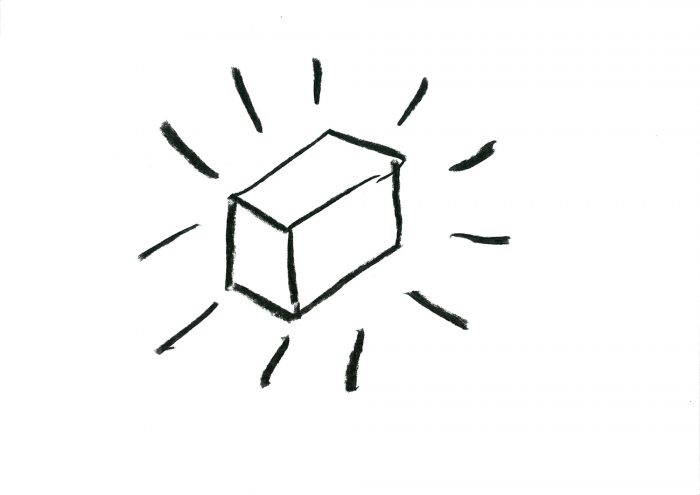舞蹈之家项目是芬兰表演艺术史上一个期待已久的里程碑。这座令人印象深刻的新建筑和位于电缆厂文化中心旧址的翻新房舍是由JKMM建筑事务所与芬兰同行ILO建筑事务所合作设计的。该项目结合了新与旧,包括超过7000平方米的舞蹈专用空间–为舞蹈、马戏和文化的表演和体验提供了世界级的环境。芬兰第一个为舞蹈设计的地标,于2022年春天在赫尔辛基市中心的电缆厂文化中心开幕。
The Dance House project is a long-awaited milestone in the history of Finnish performing arts. The impressive new building and renovated premises in the old parts of the Cable Factory cultural center are designed by JKMM Architects in collaboration with fellow Finnish practice, ILO architects. The project, combining new and old, comprises over 7,000 square meters dedicated to dance – a world-class setting for the performance and experience of dance, circus, and culture. Finland’s first landmark designed for dance opened at the Cable Factory Cultural Centre in Helsinki’s downtown area in spring 2022.
舞蹈开始了。近年来,舞蹈作为一种流行的娱乐方式,已经成为芬兰生活的重要组成部分,有助于人们的幸福生活。在这个意义上,专门用于舞蹈的房子是 “幸福 “的基础设施的一部分,是一种共同利益。
Dance begins. In recent years, dance has become an important part of life in Finland as a popular form of recreation that contributes to people’s well-being. In this sense, a house dedicated to dance is part of the infrastructure for “happiness”, a common good.
该建筑是对赫尔辛基以前的电缆厂进行的重大改造和扩建。从1940年代初开始,这里是生产船用电缆等的地方。20世纪90年代初,该建筑被赫尔辛基市收购,今天,电缆厂是芬兰最大的文化中心,包含博物馆、画廊、工作室、艺术学校,以及其他许多空间和功能,供数百名创意租户和专业人士使用。
The building is a significant remodeling and extension of Helsinki’s former cable factory. Dating from the early 1940s, this is where, for example, marine cables were manufactured. In the early 1990s, the building was acquired by the City of Helsinki and, today, the Cable Factory is Finland’s largest cultural center containing museums, galleries, studios, art schools, and many other spaces and functions for hundreds of creative tenants and professionals.
舞蹈之家为前工厂的历史及其周围环境增加了一个引人注目的现代层次。新与旧被置于对比之中,但也相互对话。电缆厂的文化和艺术租户及参观者从一开始就积极参与到设计过程中。他们的反馈使这个有30年历史的文化中心在施工过程中进行了大修。
The Dance House adds a striking contemporary layer to the history of the former factory and its surroundings. The new and the old are placed in contrast, but also in dialogue with each other. The Cable Factory’s cultural and artistic tenants and visitors were actively engaged in the design process from the beginning. Their feedback has led to a major overhaul of the 30- year-old cultural center during the construction project.
舞蹈是一种灵感。舞蹈之家的建筑灵感来自于舞蹈。其目的是研究舞蹈的基本原则,而不是其形式和美学。
舞蹈涉及到重力、轻度和人体的重量。主立面由两面巨大的钢墙组成,从地面抬起,在空中盘旋,似乎违背了重力。这两面墙是相互对话的:一面墙是由粗糙的生锈的钢制成,另一面墙是由闪亮的不锈钢制成。这些 “漂浮 “的金属外墙是通过激光焊接技术进行定制设计的,以创建具有最大金属表面的定制夹层板。
Dance as an inspiration. The architecture of the Dance House was inspired by dance. The aim was to examine the underlying principles of dance rather than its forms and aesthetics.
Dance deals with gravity, lightness, and the weight of the human body. The main façades consist of two gigantic steel walls, lifted from the ground and hovering in the air, seemingly defying gravity. The two walls are in dialogue: one wall is made of rough rusted steel and another of shiny stainless steel. The “floating” metal facades were custom designed by using laser welding technology, to create bespoke sandwich panels with the biggest possible surfaces of metal.
舞蹈表演也创造了幻觉。入口广场的钢墙形成了一个巨大的表面,用于反射和在黑暗的夜晚的光线。浅色绸缎般的钢表面可以随着光线的变化而变化,它可以成为舞蹈活动的风景的一部分。
面对公园,北面的外墙被数百个圆形铝盘覆盖。这些圆盘在天空下创造出抽象的节奏感。节奏也是舞蹈的关键原则之一。
Dance performances also create illusions. The steel wall of the entrance square forms a gigantic surface for reflections and light in the darkening evening. The light satin-like steel surface can be transformed with light, it can become a part of the scenery of the dance events.
Facing the park, the North facades are covered by hundreds of circular aluminum discs. The discs create abstract rhythmic surfaces against the sky. Rhythm is also one of the key principles of dance.
舞蹈的机器。舞蹈之家就像一个巨大的现代 “舞蹈机器”,被设计成与一个旧工厂相连接。空间的规模是工业化的,细节可以被识别为机器的零件。舞蹈之家为体验和表演舞蹈提供了最先进的技术。
Machine for dance. The Dance House is like a huge modern “dance machine”, designed to connect to an old factory. The spaces are industrial in scale and the details can be identified as parts of a machine. The Dance House provides state-of-the-art technology for experiencing and performing dance.
7,000平方米的项目包含两个黑盒舞蹈剧场空间。埃尔科厅 “是北欧国家最大的舞蹈表演空间:宽26米,深37米,高24米,包括一个可移动的700座的望远镜座椅系统。这个灵活的空间最多可以容纳1000人。埃尔科厅的礼堂、舞台和侧台也可以分开,形成三个活动空间。电缆厂的旧 “潘努厅 “被重新设计成一个可容纳235-400人的小型黑盒剧院空间。模块化和可移动的座椅系统共有1100个座位。舞蹈之家的表演空间同样适用于舞蹈、马戏和其他高要求的表演艺术。
The 7,000 sqm project contains two black-box dance theatre spaces. ‘Erkko Hall’ is the largest dance performance space in the Nordic countries: 26 meters wide, 37 meters deep, and 24 meters high, including a mobile 700-seat telescope seating system. The flexible space can accommodate up to 1,000 people. The Erkko Hall’s auditorium, stage, and side stage can also be separated to form three event spaces. The Cable Factory’s old ‘Pannu Hall’ was redesigned into a smaller black-box theatre space for 235-400 people. The modular and movable seating system has a total of 1,100 seats. The performance spaces of the Dance House are equally suitable for dance, circus, and other demanding performing arts.
舞蹈之家项目容纳了电缆厂的一个新心脏,一个玻璃屋顶覆盖了工厂两翼之间的外部庭院空间,将其转变为一个多功能的入口和活动空间。在内部,除了舞蹈之家剧院外,游客还可以看到大厅;餐厅;作为地下俱乐部的地窖,以及衣帽间。后台设施包括表演者的绿室;训练室;更衣室;办公室。舞蹈随处可见:走出大厅,来到大厅、玻璃庭院,再往外走到电缆广场,都有演出设施。
The Dance House project houses a new heart for Cable Factory, a glazed roof to cover the outside courtyard space between the factory wings transforming it into a multifunctional entrance and event space. Inside, in addition to the Dance House theatres, the visitor will find the lobby; a restaurant; a cellar serving as an underground club, and a cloakroom. Back-of-house facilities include the performers’ greenroom; a training studio; changing rooms; offices. Dance can spread everywhere: out of the halls to the lobby, glass courtyard, and further out to Cable Square, all kitted out with performance facilities.
Architects: ILO architects, JKMM Architects
Area : 7000 m²
Year : 2022
Photographs :Marc Goodwin, Hannu Rytyk, Tuomas Uusheimo, Peter Vuorenrinne, Pauliina Salonen
Lead Architect : Teemu Kurkela
Project Architect : Harri Lindberg
Architects : Teemu Taskinen, Hannu Rytky, Salla Oikkonen, Marko Pulli, Reetta Aarnio, Anniina Koskela, Edit Bajsz, Asmo Jaaksi, Samuli Miettinen, Juha Mäki-Jyllilä
Interior Architect : Jarno Vesa
Designer : Tatu Laakso
Leading Interior Architect : Noora Liesimaa
Interior Architects : Paula Salonen
City : Helsinki
Country : Finland

